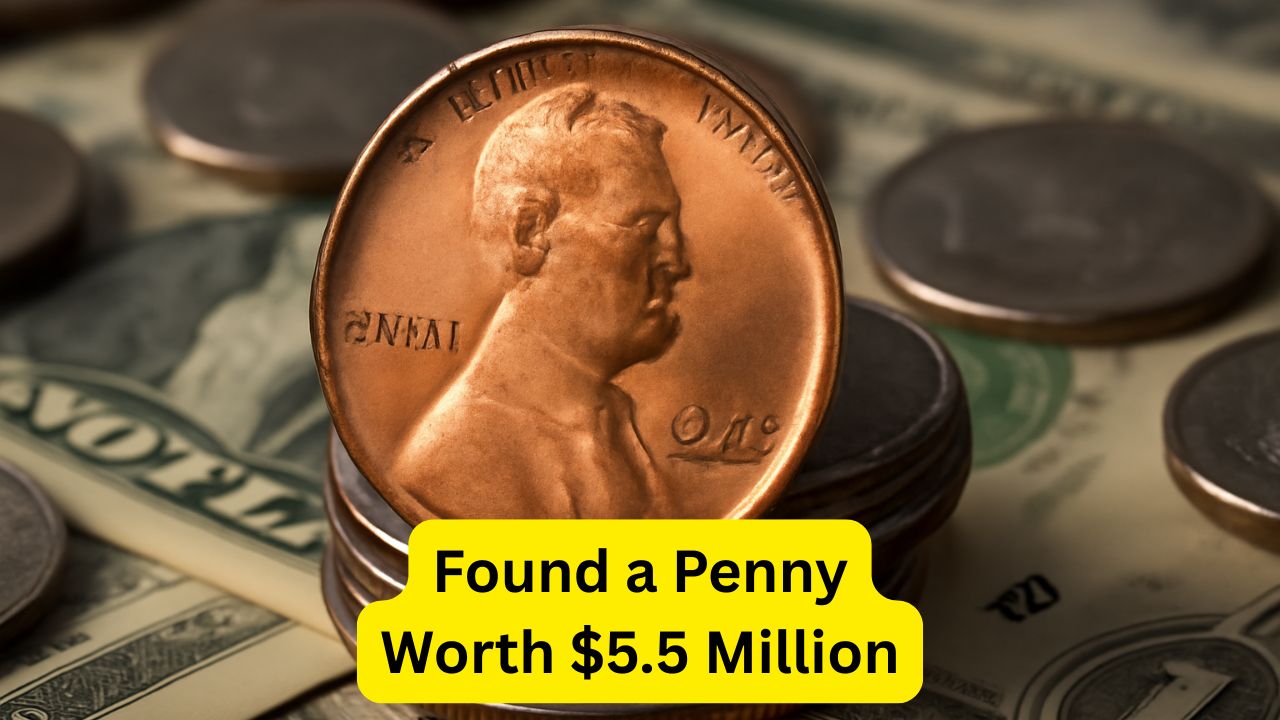Rare Lincoln Wheat Penny – The Lincoln Wheat Penny is one of the most popular collectible coins in the United States, but few know that certain rare versions of this coin could be worth millions today. Among these, a particular rare Lincoln Wheat Penny has shocked collectors with its staggering valuation of up to $5.5 million. This coin, minted during a time when errors and unique variations were more common, has become one of the most sought-after treasures in numismatic history. Many people might overlook such coins in their spare change or old collections without realizing their true worth. The rarity, historical significance, and pristine condition of these pennies make them extremely valuable to collectors and investors. For everyday people, this means that checking your pocket change, old jars of coins, or family heirlooms could lead to an unexpected fortune. If you come across an unusual Lincoln Wheat Penny, you might just be holding one of the rarest and most valuable coins ever discovered.
Why This Rare Penny Is Worth Millions
The value of the rare Lincoln Wheat Penny lies in its scarcity and historical background. Coins with minting errors, unusual materials, or limited production runs often attract collectors willing to pay astronomical prices. This $5.5 million penny is believed to be one of only a handful in existence, making it a once-in-a-lifetime find. Condition also plays a crucial role: a well-preserved coin without scratches, corrosion, or wear can be valued far higher than one in poor shape. Professional grading services are often used to certify a coin’s authenticity and quality, ensuring its true worth in the market. Collectors prize these coins not only for their rarity but also for their connection to American history, reflecting a period when coin minting was less standardized and small errors created treasures for future generations. The immense interest from collectors and investors continues to push its value higher.
How to Identify a Rare Lincoln Wheat Penny
Spotting a rare Lincoln Wheat Penny requires knowledge of mint marks, dates, and specific characteristics that set it apart from ordinary coins. For instance, pennies minted in 1943 using copper instead of steel are among the most famous examples of rare coins. Similarly, double-die errors, unusual mint marks, or off-center strikes can make a penny extremely valuable. The rare penny worth $5.5 million has a unique combination of these factors, making it one of the most extraordinary finds in coin-collecting history. To identify such coins, collectors look closely at the year, the small letter under the date (indicating where it was minted), and any unusual printing or metal use. Using a magnifying glass or consulting an expert can help confirm whether a penny is rare. This attention to detail is crucial, as many ordinary pennies look similar but carry no added value.
Where You Might Find One
The incredible fact is that some of the rarest and most valuable coins have been discovered in everyday circulation. People have found rare Lincoln Wheat Pennies in old jars of change, coin rolls from banks, or even tucked away in inherited coin collections. While the chances of stumbling upon the exact $5.5 million penny are slim, history shows that ordinary people have struck gold with unexpected finds. Checking old piggy banks, boxes of coins, or family collections could reveal hidden treasures. Many collectors advise holding onto unusual-looking pennies until an expert can examine them. Even if you don’t find the $5.5 million rarity, other valuable versions of the Lincoln Wheat Penny can fetch hundreds or thousands of dollars. Staying aware of the details and keeping an eye out increases your chances of discovering a coin that could change your financial future.
What to Do If You Find One
If you come across a Lincoln Wheat Penny that seems unusual or rare, the first step is not to spend it or clean it, as cleaning can reduce its value significantly. Instead, store it safely and consult with a professional coin dealer or a grading service to verify its authenticity. They can provide certification and an official grade, which is essential for determining its market value. Once verified, the coin can be sold through auctions, private collectors, or numismatic organizations. Some rare coins have sparked bidding wars that drove prices far higher than expected. Even if your penny doesn’t reach the $5.5 million mark, it could still provide a surprising financial windfall. For many, the thrill lies not only in the money but also in holding a piece of history that connects generations. So before dismissing that old coin in your drawer, take a closer look—it might just change your life.
